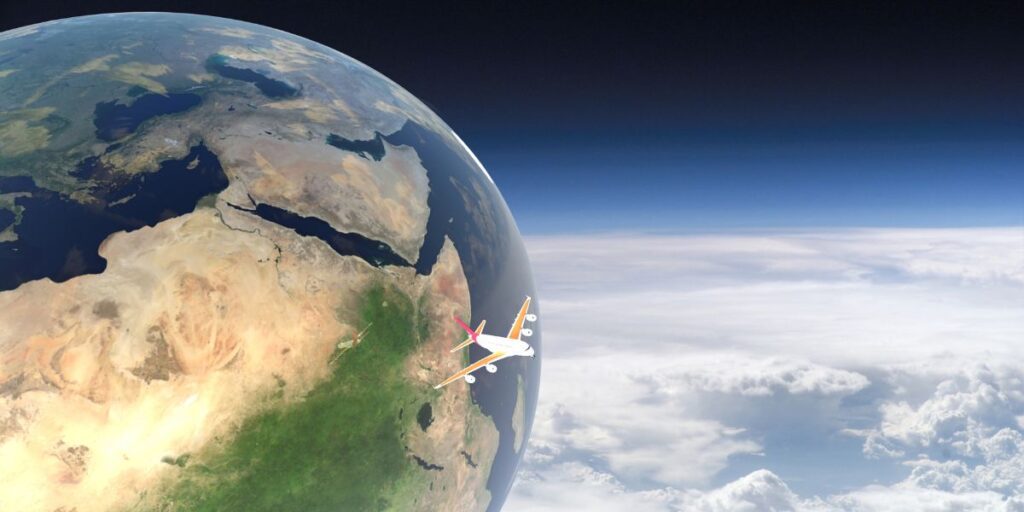In 2025, space tourism has officially shifted from a distant dream to a burgeoning reality, with private companies like SpaceX, Blue Origin, and Virgin Galactic taking the lead in making space travel accessible to the public. While still a niche market, space tourism has the potential to redefine the future of commercial travel, offering thrilling experiences that allow consumers to venture into the cosmos. This article explores the current state of space tourism, from ticket costs and safety measures to the types of experiences offered, and examines how this emerging market could transform the travel industry and lay the groundwork for future commercial space exploration.
The Rise of Space Tourism: Companies Leading the Charge
Space tourism has experienced remarkable growth in recent years, driven by advancements in rocket technology and significant investment from private companies. SpaceX, Blue Origin, and Virgin Galactic have become the front-runners in this new era of commercial space exploration, each offering distinct experiences for would-be space travelers.
- SpaceX, founded by Elon Musk, has positioned itself as a pioneer in both space tourism and commercial space travel. The company’s Starship program, which is still in development, aims to send private astronauts on orbital and deep-space missions, with the ultimate goal of colonizing Mars. While these missions are not yet available for tourists, SpaceX’s successful launches and planned missions, including the dearMoon project, represent the future of luxury space travel.
- Blue Origin, led by Jeff Bezos, has focused on suborbital spaceflights. Its New Shepard rocket offers tourists a brief journey to the edge of space, where they can experience weightlessness and view the curvature of Earth before returning to the planet. Blue Origin’s trips are relatively short, lasting around 10-15 minutes, but they provide an accessible way for private citizens to experience space.
- Virgin Galactic, founded by Sir Richard Branson, is perhaps the most well-known company in the space tourism industry. Virgin Galactic’s SpaceShipTwo offers suborbital flights that take passengers to the edge of space, where they experience a few minutes of weightlessness and a view of Earth’s atmosphere. Virgin Galactic has already conducted successful test flights with paying customers, and commercial operations are now in full swing, making it one of the most established players in the space tourism industry.
Cost of Tickets: Who Can Afford to Travel to Space?
While space tourism has made impressive strides, it remains an exclusive and expensive endeavor. In 2025, the cost of a ticket for a suborbital flight with companies like Virgin Galactic or Blue Origin can range from $200,000 to $500,000 per passenger, with some experiences costing even more depending on the luxury package selected. This price includes a brief, thrilling experience of space, including weightlessness and breathtaking views of Earth.
For those looking to embark on more extensive space travel, such as missions with SpaceX, ticket prices are significantly higher. The cost of a Starship mission, which involves a journey beyond Earth’s orbit, can exceed $50 million per seat. These trips offer a much longer duration, with travelers spending days or even weeks in space. While the high cost makes space tourism inaccessible for the average consumer, the hope is that the industry will eventually scale, driving costs down and making space travel more affordable in the future.
Safety Measures: Ensuring the Journey is Secure
Safety is, of course, a paramount concern for space tourism companies. The complexities and risks of space travel require rigorous safety measures to protect passengers and ensure the success of each mission. In 2025, all major space tourism companies have implemented extensive safety protocols, drawing from decades of experience in the aerospace industry.
- Rocket testing and crew training are integral parts of ensuring the safety of passengers. Each company conducts multiple test flights before launching commercial missions, ensuring that the rocket systems and spacecraft are capable of withstanding the harsh conditions of space travel.
- Onboard safety systems are also essential. Spacecraft like SpaceX’s Dragon capsule and Virgin Galactic’s SpaceShipTwo are equipped with advanced safety features such as emergency escape mechanisms, automated flight control systems, and life support systems.
- Crewed missions also involve experienced astronauts and engineers, who monitor the spacecraft and provide support to passengers throughout the journey.
As the industry matures, additional safety regulations and certifications will be introduced, and as more successful missions take place, the overall confidence in space tourism will likely grow.
The Types of Experiences Offered to Consumers
Space tourism in 2025 offers a variety of experiences depending on the company and the mission. For most travelers, the most common option is a suborbital flight, which takes passengers just beyond the Kármán line (the boundary between Earth’s atmosphere and space), where they can experience weightlessness for several minutes and enjoy panoramic views of the planet.
While brief, these suborbital flights provide an exhilarating taste of space and are considered the most affordable and accessible option. On these trips, passengers can float in zero gravity, witness the curvature of Earth, and see the vastness of space before returning to Earth.
For those seeking a more extended space experience, orbital missions are becoming a reality. Companies like SpaceX have already successfully launched private astronauts to the International Space Station (ISS), and in the future, longer missions may involve stays in low Earth orbit, as well as trips beyond, to destinations like the Moon or Mars.
The Impact on the Travel Industry
Space tourism is not just a niche market for the wealthy—it is a force that has the potential to transform the broader travel industry. As private companies continue to push the boundaries of commercial space exploration, space tourism will likely influence the development of spaceports, new types of hotels, and even the growth of orbital infrastructure.
In the long term, the commercialization of space travel could open up new tourism destinations. Just as airlines have created a global network of travel routes, space tourism could one day see the establishment of space resorts, orbital hotels, and lunar expeditions for tourists. The emerging market could also stimulate innovation in transportation, sustainability, and other sectors of the travel industry.
The Future of Space Tourism: A New Era of Exploration
Looking ahead, space tourism in 2025 is just the beginning of an exciting new frontier in commercial travel. While the industry remains in its early stages, the foundations for a thriving market are being laid, and as technology continues to improve, the cost of space travel will decrease, making it more accessible to a broader audience.
As the barriers to space tourism gradually lower, it could pave the way for even more ambitious commercial space exploration efforts, from trips to the Moon to the eventual colonization of Mars. The commercialization of space travel could open up a whole new era of exploration, blending tourism, science, and technology in ways that were once only dreamed of.


